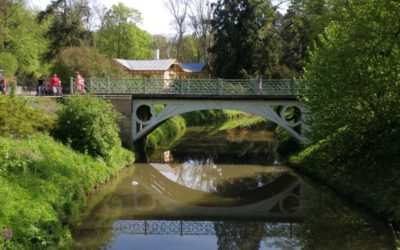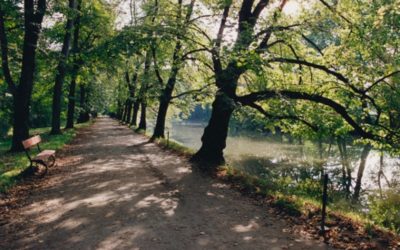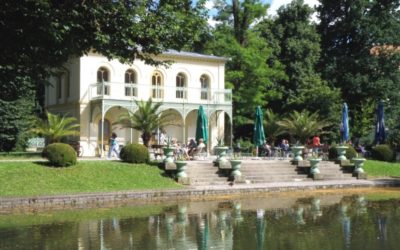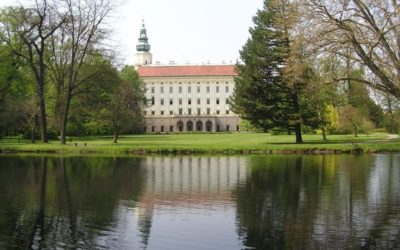- Archbishop’s Castle
- Castle gardens
- History of the town
- Flower garden
- Church of St. John the Baptist
- Church of St. Mořic
- Parish church
- Masaryk Square
- Archbishop’s castle cellars
- Bishop’s Mint
- Lost street
- Town hall
- Large square
- Max Švabinský’s lunettes
- Windmill in Velké Těšany
- Rymice u Holešova
- Chropyně Castle
- Museum of the Kroměříž Region
- Brdo lookout tower
- Regular festivals and events
- Accommodation in Slovakia
The beginnings of the Podzámecká Garden date back to the late Middle Ages. The first written mention dates from 1509, there is talk of an ornamental and utility garden. In the 17th century, the garden was rebuilt according to the early Baroque style. After 1803, it was extended to the river Moravia, and included the Dlouhý rybník, canal and period buildings. The garden took the form of artificial gardens, partly influenced by the aesthetics of the Enlightenment. Some buildings have been preserved to this day (Temple of Friendship, artificial ruins), others are known only from watercolors (waterfall, hermitage, Pink Hill, etc.). In the 1930s, the garden was transformed into a natural landscape park according to English Romanticism, consisting of ponds, rivers, groups of trees, rare trees, lawns, gazebos, statues and flower beds. In the 1940s, the Pompeii Colonnade and Maximilánův dvůr were added.
The Podzámecká garden covers an area of 64 ha, of which 47 ha are woody. There are 48 species of coniferous trees and 153 species of deciduous trees. The oldest foreign individuals are probably groups of sycamore trees, we can also find ginkgo, magician, etc. Numerous species and varieties of woody plants come from southern Europe, North America, East Asia.




